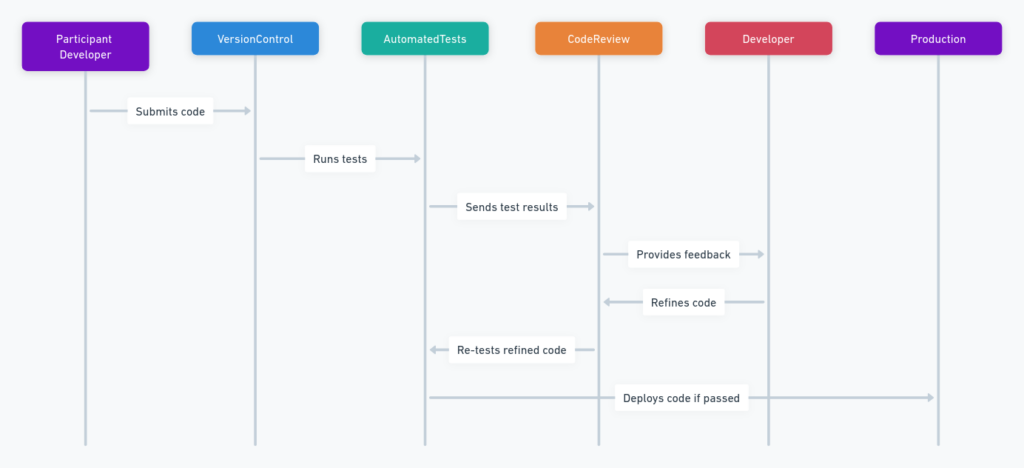Delivering high-quality software development projects is of utmost importance in this complex industry, so making sure they reach completion without errors or malfunctions should always be a top priority.
This daunting challenge can be made manageable with multiple layers of testing, each serving its own purpose and targeting different aspects of software.
Not only do these layers help identify bugs and issues early, they also greatly contribute to product quality, performance, and user satisfaction.
Recognizing the significance of each testing stage enables developers and testers to produce more reliable and cost-efficient software products while decreasing post-release maintenance time and expense.
In this blog post, we explore all of the different layers essential for successful software development cycles as well as why each holds such importance when creating high-quality solutions.
Testing Progression Stages (PTS)

Unit Testing
At its core, unit testing is the initial stage of software testing where individual components or modules of an application are evaluated in isolation to validate that each performs as intended.
A unit is typically defined as any piece of code with at least one input and output that can be tested; in procedural programming this could even mean an entire module but more often means one function or procedure.
Developers usually carry out unit tests during application development by running automated unit tests so changes to code can be quickly validated before implementation takes place.
Integration Testing is a type of software testing in which individual units are combined and evaluated as an integrated group, in order to identify any faults in their interaction between one another.
Test drivers and stubs may be used as part of this phase to aid integration testing; its purpose being to discover any flaws between units which were previously integrated through unit testing alone.
It ensures the units work correctly together thereby validating functionality and performance between modules which work as one entity - this level of testing may be conducted either by developers themselves or professional testing personnel.
System Testing
System testing involves performing rigorous examination of an integrated, fully functioning system to evaluate compliance with its specified requirements.
As an advanced testing practice that mimics production environments, system testing enables testers to ensure that software products conform to quality standards expected by end-users, including load, regression, and security testing.
Benefits of Implementing Multiple Testing Layers
Implementing Multiple Layers of Testing Its Integrating multiple layers of testing significantly enhances software quality. Each test layer focuses on different aspects of quality assurance - from unit and integration testing for functional correctness, behavioral testing in integration testing and comprehensive system coverage testing.
Ensuring software undergoes scrutiny at various levels helps identify and correct errors before reaching end users, leading to robust, reliable applications with better user experiences.
Early Defect Detection
Applying multiple layers of testing during software development provides another significant benefit: early defect detection. By catching bugs at the unit testing level, major problems that would otherwise cost time and money to address later can be avoided.
Furthermore, as issues are identified earlier in development lifecycle processes they become simpler and cheaper to address - ultimately decreasing overall project costs and duration.
Multiple Layers of Testing
Numerous levels of testing contribute to an enhanced user experience. By rigorously testing software at every layer, developers can ensure it operates smoothly, efficiently, and reliably across various scenarios.
This dedication to quality at each stage not only meets but often surpasses user expectations resulting in increased satisfaction and trust in the software product post-release as well as reduced maintenance costs and customer complaints post-launch bolstering its market reputation.
Challenges associated with Implementing Multiple Testing Layers
Implementing multiple layers of testing during software development can significantly enhance its quality and reliability; however, this approach presents its own set of challenges, such as time restrictions and resource allocation that must be managed to maximize its benefits.
Integrating multiple layers of testing adds complexity and can significantly extend development timelines. Each layer, from unit testing through system and user acceptance testing, requires time for planning, execution and evaluation of results.
Finding an acceptable balance between thorough testing and meeting project deadlines can often prove challenging; developers and project managers must often make difficult choices regarding depth and breadth of tests at each layer - sometimes making concessions for speed over thoroughness.
Resource Allocation
Testing effectively takes not just time but also a range of resources including skilled personnel, tools, and systems in order to run test cases effectively.
Allocating these efficiently across different testing layers is often challenging - for instance specialized knowledge may be required in performing performance or security testing which may necessitate hiring external expertise or creating staffing challenges within an organization.
Furthermore, licensing costs related to advanced testing tools as well as maintaining multiple test environments can put strain on project budgets.
Best Practices for Effective Testing Strategies
To overcome the challenges associated with multilayer testing, several best practices should be applied. These include making use of automation tools, managing test cases effectively, and integrating continuous integration processes.
Automation Tools
Automation testing tools play a vital role in streamlining the testing process across all layers.
Automated tools allow teams to focus on more complex testing scenarios while automating repetitive tasks efficiently and with high precision, freeing them up from repetitive task execution and saving them both time and effort in terms of speeding up testing procedures and assuring consistent test execution - essential characteristics in layers like regression testing.
Test Case Management
Effective management and organization of test cases is vital to ensure all testing layers are adequately addressed.
Good test case management practices involve prioritizing test cases based on risk and impact to ensure efforts are concentrated where they're most needed.
Tools with traceability between requirements, test cases, and defects can significantly enhance transparency and communication within teams while expediting issue resolution more quickly.
Continuous Integration (CI) involves merging all developers' working copies onto a shared mainline several times daily, which helps ensure changes are continuously tested, helping to detect and fix defects early in the development cycle.
Integrating this practice into testing strategy ensures frequent testing across various layers, which improves quality control.
Furthermore, continuous integration provides an easier and more efficient development process with reduced integration issues that typically arise later in development phases.
Book a Demo and experience ContextQA testing tool in action with a complimentary, no-obligation session tailored to your business needs.
Conclusion
Testing plays a key role in software development. From unit testing at the code level to acceptance testing from user perspectives, successful implementation of each testing stage helps mitigate risks and enhance product quality.
Through understanding and applying various layers of testing, development teams can effectively identify bugs early, save costs, and pave the way for reliable product releases.
Testing should not be seen as just another phase; rather it should be seen as integral to producing software products with longevity.
Also Read - Is Technical debt okay?
